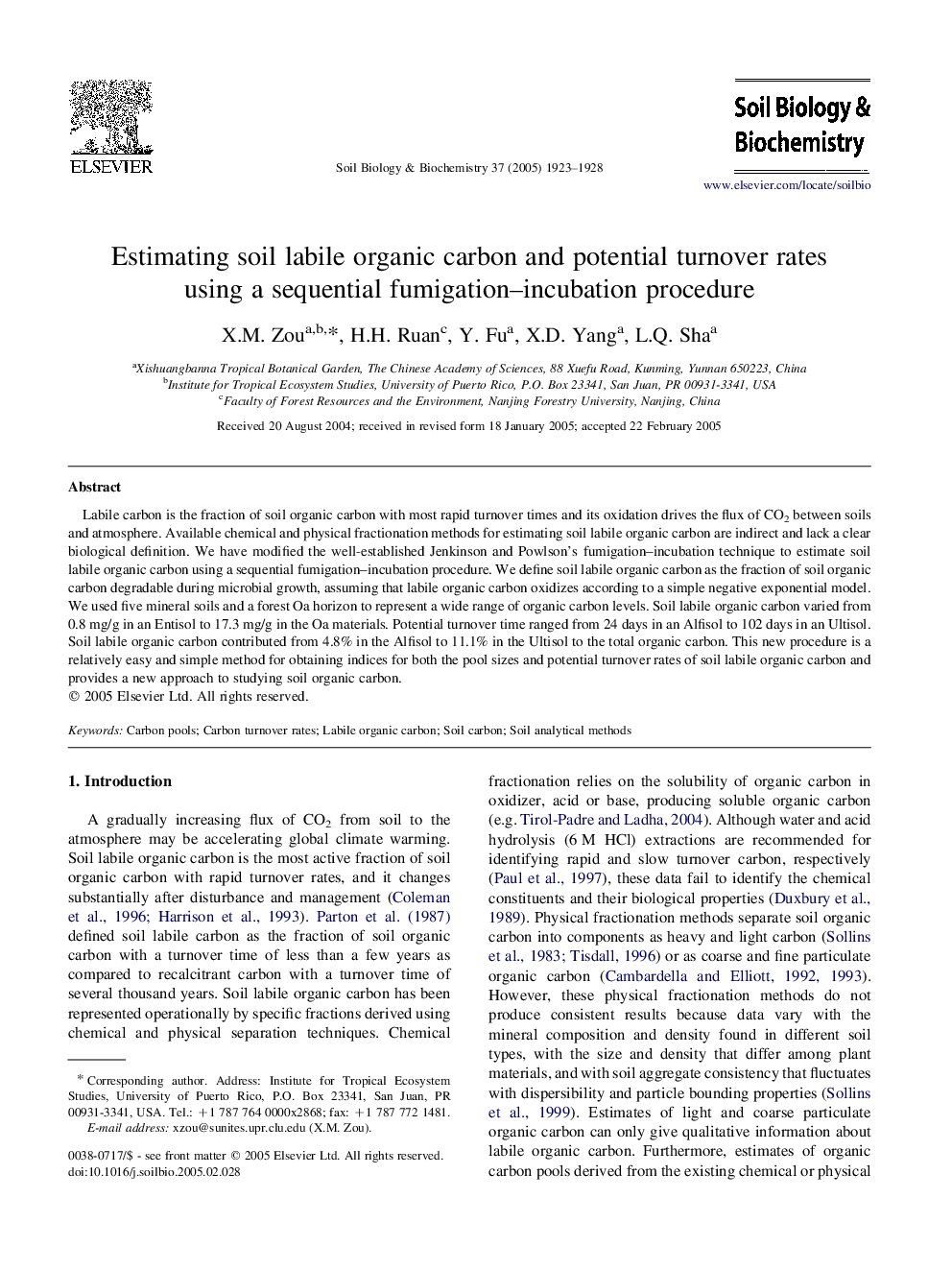| Article ID | Journal | Published Year | Pages | File Type |
|---|---|---|---|---|
| 10846270 | Soil Biology and Biochemistry | 2005 | 6 Pages |
Abstract
Labile carbon is the fraction of soil organic carbon with most rapid turnover times and its oxidation drives the flux of CO2 between soils and atmosphere. Available chemical and physical fractionation methods for estimating soil labile organic carbon are indirect and lack a clear biological definition. We have modified the well-established Jenkinson and Powlson's fumigation-incubation technique to estimate soil labile organic carbon using a sequential fumigation-incubation procedure. We define soil labile organic carbon as the fraction of soil organic carbon degradable during microbial growth, assuming that labile organic carbon oxidizes according to a simple negative exponential model. We used five mineral soils and a forest Oa horizon to represent a wide range of organic carbon levels. Soil labile organic carbon varied from 0.8Â mg/g in an Entisol to 17.3Â mg/g in the Oa materials. Potential turnover time ranged from 24 days in an Alfisol to 102 days in an Ultisol. Soil labile organic carbon contributed from 4.8% in the Alfisol to 11.1% in the Ultisol to the total organic carbon. This new procedure is a relatively easy and simple method for obtaining indices for both the pool sizes and potential turnover rates of soil labile organic carbon and provides a new approach to studying soil organic carbon.
Related Topics
Life Sciences
Agricultural and Biological Sciences
Soil Science
Authors
X.M. Zou, H.H. Ruan, Y. Fu, X.D. Yang, L.Q. Sha,
